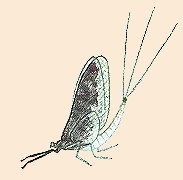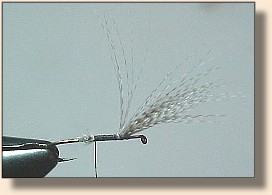
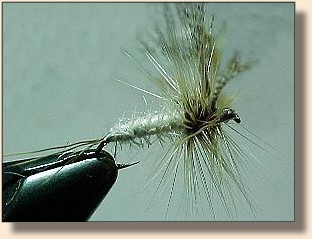 |
|
Coffin Fly
|
|
2. Select 2 or 3 golden badger hackles and secure them in
behind the upright teal wing segments. Do not wind the
hackles at this time.
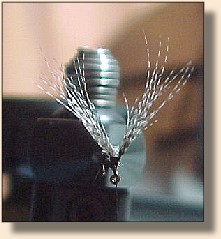 3. Wind the thread back to a point on the hook just above the barb and secure the tail fibers of black and white peccary hairs divided into place. (Using 3 fibers) Allow one to go straight back, divide the others one to the left and one to the right.
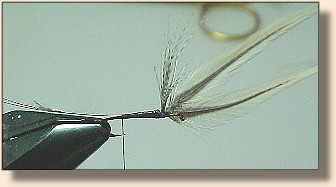
|
|
4. Tie in the white poly yarn, a white saddle hackle, and white
3/0 thread at this point. Wind the tying thread forward to just
behind the hackle and the wings.
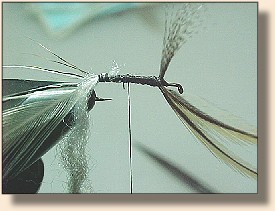 5. Wind the white poly yarn forward making a smooth body, and using the tying thread secure it.
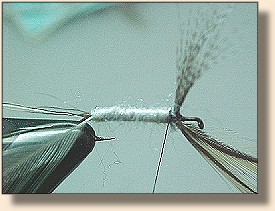
|
|
6. Wind the saddle hackle forward to the same point and secure
it with the tying thread. Making sure as you do this to wrap the
hackle so that the wraps do not touch each other but are not
palmered forward. Clip off the end of the hackle left over then
trim the hackle barbs to short stubble.
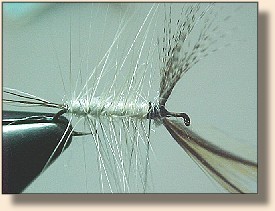 7. Wrap the 3/0 white thread which is the rib forward making sure to counterwrap it over the trimmed hackle. Secure it with the tying thread at the same point that the poly and the white hackle are secured.
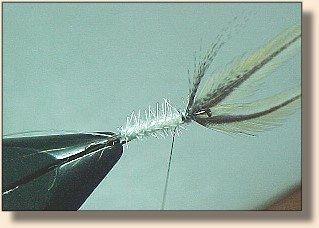 8. Next wrap the tying thread in front of the wings and to a point where the head of the fly will start.
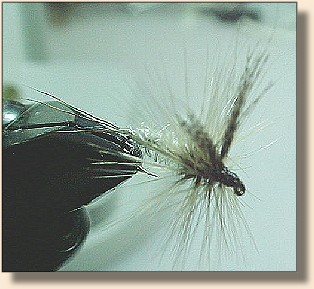
|
|
9. Wrap the golden badger hackle 2-3 times behind the wings and
then the same in front of the wings, don't forget to weave the hackle
as you wrap it so that it doesn't pin down other hackle barbs previously
wrapped. Tie each hackle off and trim, and then tie a nice tapered
head.
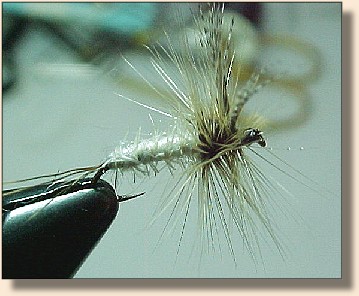
More:
|
|
For more great flies, check out:
Beginning Fly Tying,
Intermediate Fly Tying and Advanced
Fly Tying.
|
